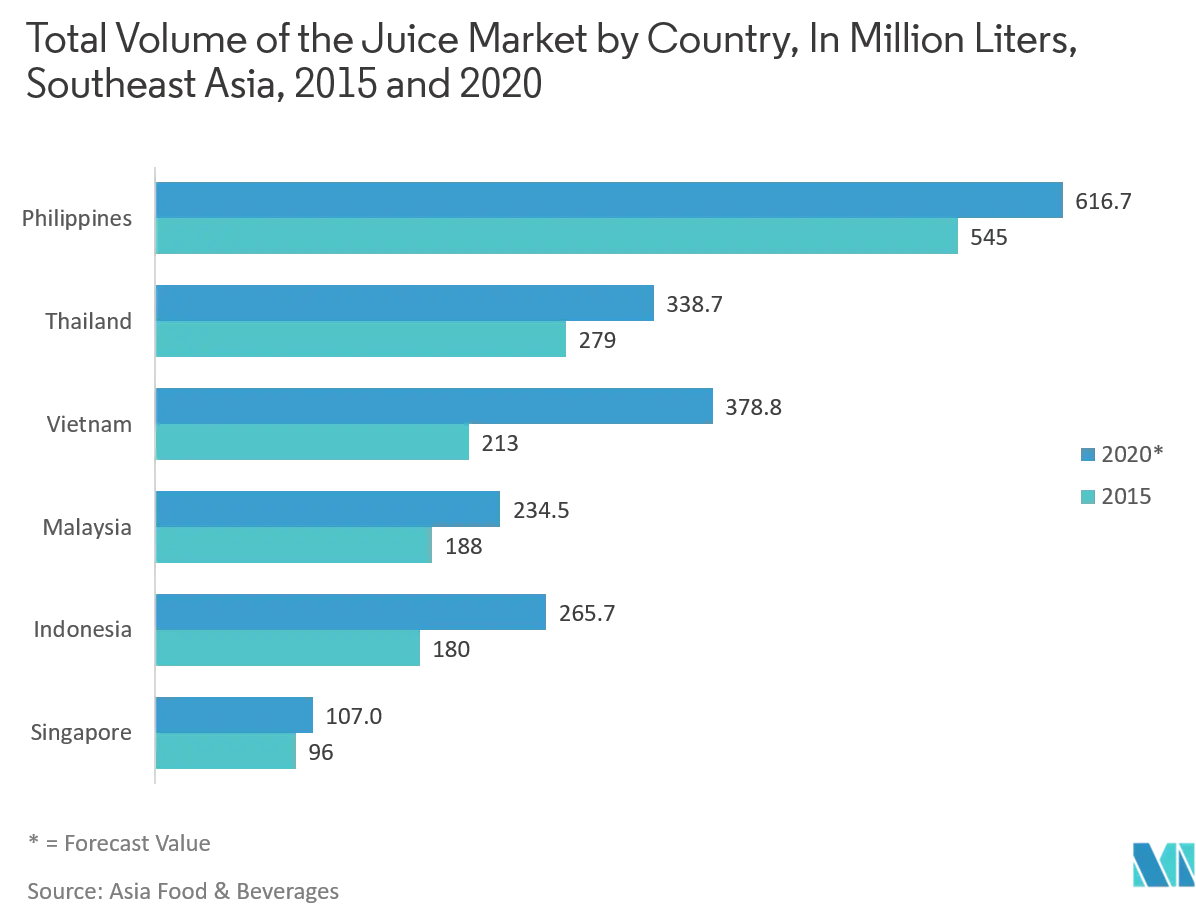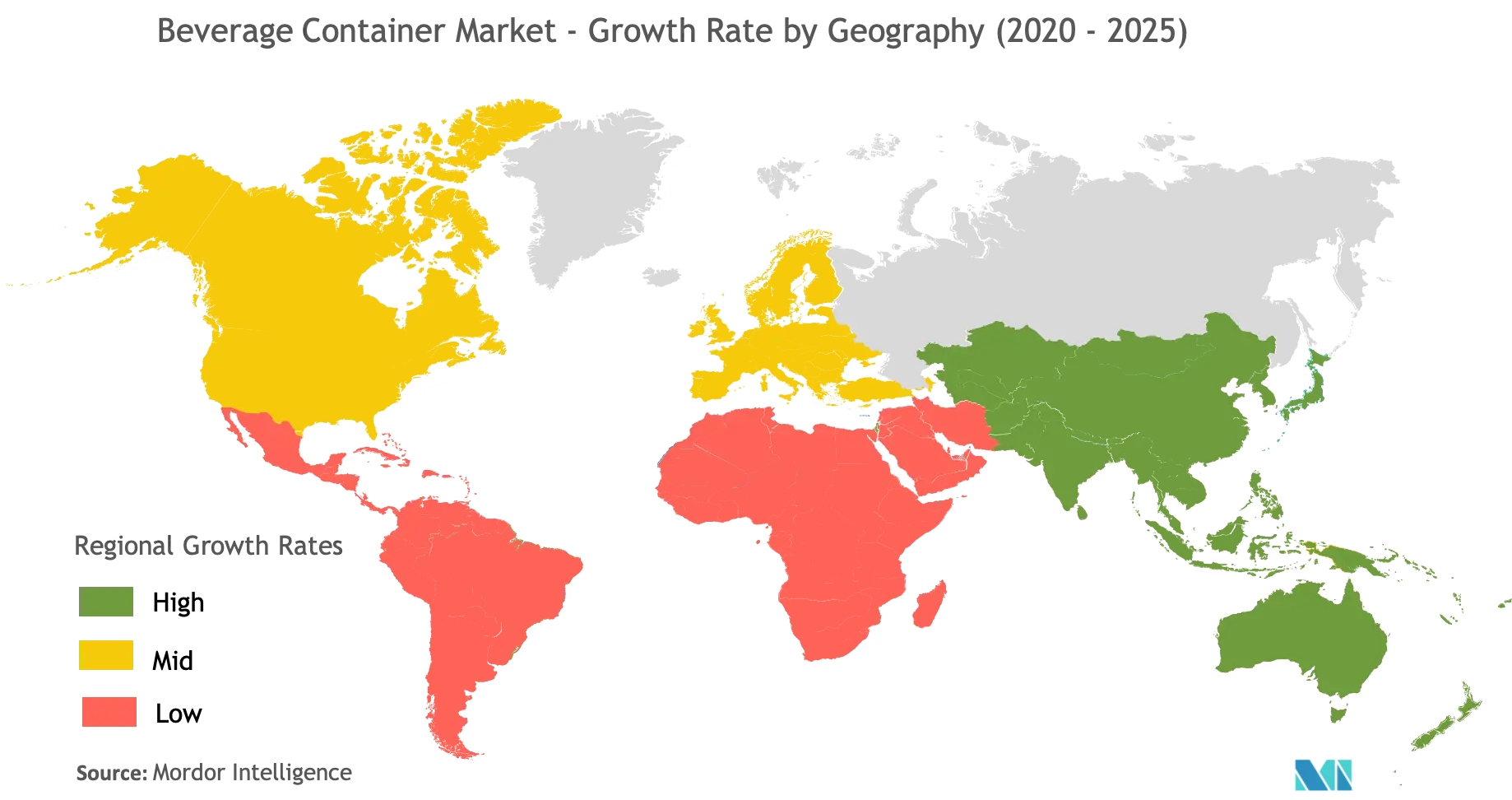Market Trends of Beverage Container Industry
This section covers the major market trends shaping the Beverage Container Market according to our research experts:
Plastic Packaging Holds a Significant Market Share
- Recyclability and the ability to be molded into different shapes makes plastic an attractive choice for beverage manufacturers. In addition, the material is also capable of enabling beverage companies to enhance convenience(low weight). Further, eco-friendly initiatives by many beverage companies, are expected to fuel the demand for PET containers over the next four years.
- The growing consumer preference for a recyclable plastic bottle is also forcing vendors to innovate new products in the market. For instance, in October 2019, Coca-Cola introduced a new plastic bottle made of plastic from the sea. About 300 sample bottles were produced using 25% recycled marine plastic retrieved from the Mediterranean Sea and beaches.
- The food and beverage industry is one of the biggest consumers of plastic. In the beverage industry, the adoption of recyclable PET (rPET) witnessed a tremendous increase, owing to the sustainable packaging policies of US-based beverage majors, such as Coca Cola and PepsiCo. For instance, in 2018, Nestle rolled out its first 100% rPET (recycled polyethylene terephthalate) bottle. The company plans to move to 25% rPET bottles by 2021 and 50% rPET packaging by 2025. Moreover, Danone pledged that its Evian brand water bottles would have 100% recycled PET by 2025.
- Plastic remains the most preferred container type for packaging water, besides carbonated drinks and juices. Nestle, a prominent company in the packed water segment, recently pledged to increase its use of recycled plastics, including 25% rPET (recycled PET) in its bottles, across Europe, by 2025.
- Growth in the PET bottled water market is aided by the developing economies of China, India, and Brazil, which have registered an increase in the adoption of bottled water, besides the growth in dominant regions such as the United States and the United Kingdom, among others.

North America to Hold Maximum Market Share
- The packaging is the most critical factor that plays an essential role in the widespread consumption of beverages around the world. The strong demand for sustainable and convenient packaging solutions will drive the demand for beverage containers in North America. According to the Association for Packaging and Processing Technologies (PMMI) 2018 Beverage Report, the North American beverage industry is expected to register a growth of 4.5% during the period 2018-2028.
- Moreover, companies are adopting innovative packaging solutions for beverages to provide shelf appeal and differentiation. A useful package and label highlight the unique selling proposition, showcasing everything that sets the product apart. For instance, in 2019, Australia- based The a2 Milk Company expanded its presence in the United States, with its line of a2 Milk delivered in gable-top cartons from Evergreen Packaging LLC (a US-based company). These cartons use color graphics to differentiate milk varieties. Graphics on the packaging also describe the a2 Milk difference.
- Further, the California government listed a few regulations associated with plastic containers that must be complied with by every manufacturer. Manufacturers must follow at least one of the following regulations: the container must be produced from 25% recycled material at minimum, it should be reusable, have a recycling rate of 45% at minimum, and contain floral preservatives that can be utilized in the floral business at a later stage.
- In the past few years, the United States emphasized recycled glass packaging. According to the US Glass Packaging Institute, the country annually uses more than 3.35 million metric tons of glass packaging. Over 35% of this figure accounted for the production of glass containers in 2018. Within this approach, the country built more than 80 recycling plants for all the recyclable materials.
- With the growing demand for glass bottles and containers in the United States, companies overseas seek to seize the expansion opportunity in the country. For example, in August 2019, Arglass Yamamura LLC from Japan announced an investment of over USD 123 million to build a manufacturing plant in South Georgia. With this strategic move, the company planned to use its latest glass-forming technology.


